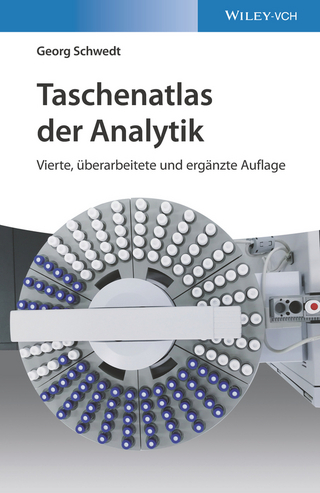Analysis of NMR Spectra
Springer-Verlag Berlin and Heidelberg GmbH & Co. K
978-3-540-05427-6 (ISBN)
Lese- und Medienproben
- Titel ist leider vergriffen;
keine Neuauflage - Artikel merken
The Magnetic Resonance Phenomenon 4 a) Nuclear Moments...4 b) Magnetic Spin States and Energy Levels 5 c) The Magnetic Resonance Condition. 7 d) The Larmor Precession. . 7 e) Experimental Aspects ...8 1. 2. Chemical Shifts ...9 a) The Screening Constant 11...9 b) Chemical Shift Scales (11 and r) 10 1. 3. Spin Coupling Constants 12 1. 4. Intensities...
I. Principles of NMR Spectroscopy.- I.1. The Magnetic Resonance Phenomenon.- a) Nuclear Moments.- b) Magnetic Spin States and Energy Levels.- c) The Magnetic Resonance Condition.- d) The Larmor Precession.- e) Experimental Aspects.- I.2. Chemical Shifts.- a) The Screening Constant ?.- b) Chemical Shift Scales (? and ?).- I.3. Spin Coupling Constants.- I.4. Intensities.- II. Some Basic Concepts.- II. 1. Groups of Equivalent Spins.- a) Definitions of Equivalence Groupings.- II.2. Time Averaging Phenomena.- a) General Effects of Time-Dependent Interactions.- b) Limiting Cases of Very Slow and Very Rapid Rates.- II.3. The Energy Level and Transition Diagram.- II.4. Strong and Weak Coupling. Nomenclature.- a) Basic Ideas.- b) Weak Coupling in a Simple Spin System.- c) Weak Coupling in a General Case. The Concepts of Basic Groups and Basic Multiplets.- d) The Magnetic Quantum Numbers of Groups of Spins.- e) Notations for Spin Systems.- f) Rules for Establishing the Occurrence of Weak Coupling.- II.5. Invariants in NMR Spectra.- a) The Spectral Moments.- III. Miscellaneous Aids for Spectral Assignment.- III.1. The Need for Additional Information.- III.2. The Effects of a Strong Stimulating Field.- III.3. Controlled Variations of the Larmor Frequencies.- III.4. Double Resonance Methods.- a) Basic Concepts of Double Resonance.- b) Spin Decoupling.- c) Double Resonance Methods Based on Population Transfer.- d) Spin Tickling.- IV. Instant Analysis of NMR Spectra.- IV. 1. Simple First Order Spectra.- a) Second Order Effects in Near First Order Spectra.- b) Accuracies of First Order Estimates in AnXm Spin Systems.- IV.2. The Two-Spin System AB.- a) The General Structure of an AB Spectrum.- b) Expressions for the NMR Parameters.- c) Limiting Cases of AX and A2.- d) Summary.- IV.3. Deceptive Simplicity.- a) Definition of Deceptive Simplicity.- b) Apparent Magnetic Equivalence.- c) Some Aids in Overcoming Deceptive Simplicity.- IV.4. The Three-Spin System ABX.- a) The Energy-Level Diagram of an ABX Spin System *.- b) The Concept of Effective Larmor Frequencies.- c) Effective Larmor Frequencies in the AJBX Spin System.- d) Analysis of Observed ABX Spectra.- e) Basic Structure of an ABX Spectrum.- f) Step-by-step Analysis of an ABX Spectrum.- g) Analysis of an Artificial ABX Spectrum.- h) Degeneracies in ABX Spectra.- IV.5. Generalization of the ABX Analysis Method: ABPX, ABX n etc.- a) The Method of Effective Larmor Frequencies.- b) Basic Structure of an ABX3 Spectrum.- c) Basic Structure of an ABX2 Spectrum.- d) Basic Structure of an ABPX Spin System.- e) Analysis Procedure for an ABPX Spectrum.- IV.6. Magnetic Equivalence and Composite Particles.- a) The Composite Particle Concept.- b) Subspectra Based on the Composite Particle Concept.- IV.7. Spectra Characterized by One Spin-coupling Constant: AnBm.- a) The Structure of A nBm Spectra.- b) The A2B Spin System.- c) The A3B Spin System.- d) The A4B Spin System.- e) The A2B2 Spin System.- f) The A3B2 Spin System.- IV.8. The Structure of AnBmXp Spectra.- IV. 9. The Symmetrical Four-Spin Systems AA'XX' and AA'BB'.- a.) The Energy Level and Transition Diagram.- b.) The AA'XX' Spin System.- c.) Analysis of AA'XX'Spectra.- d.) The Structure of AA'BB'Spectra.- e.) Analysis of AA'BB' Spectra.- f.) Typical Examples of AA'BB' Spin Systems in Proton Magnetic Resonance.- V. Quantum Mechanical Formalism.- V. 1. Introduction to the Quantum Mechanical Description of Spin Systems.- V.2. Quantum Mechanical Calculation of NMR Spectra.- a.) The NMR Spin Hamiltonian.- b.) The Transition Matrix Elements and Relative Intensities.- c) An Example: The AB Spin System.- d) The Choice of Basic Functions; the Uses of Symmetry.- e) An Example: The AB2 Spin System.- f) Rules for Evaluating Matrix Elements.- g) The ABC and ABX Spin Systems.- h) Two Examples: The AA'XX'and AA'BB' Spin Systems.- V. 3. Iterative and Least Squares Fit Procedures.- VI. Historical Notes and Suggestions for Further Reading.- Appendix A: Sign Ambiguities in ABPX Spectra.- References.
| Reihe/Serie | NMR Basic Principles and Progress ; 5 |
|---|---|
| Zusatzinfo | biography |
| Verlagsort | Berlin |
| Sprache | englisch |
| Gewicht | 470 g |
| Themenwelt | Naturwissenschaften ► Chemie ► Analytische Chemie |
| Naturwissenschaften ► Chemie ► Organische Chemie | |
| ISBN-10 | 3-540-05427-8 / 3540054278 |
| ISBN-13 | 978-3-540-05427-6 / 9783540054276 |
| Zustand | Neuware |
| Informationen gemäß Produktsicherheitsverordnung (GPSR) | |
| Haben Sie eine Frage zum Produkt? |
aus dem Bereich



